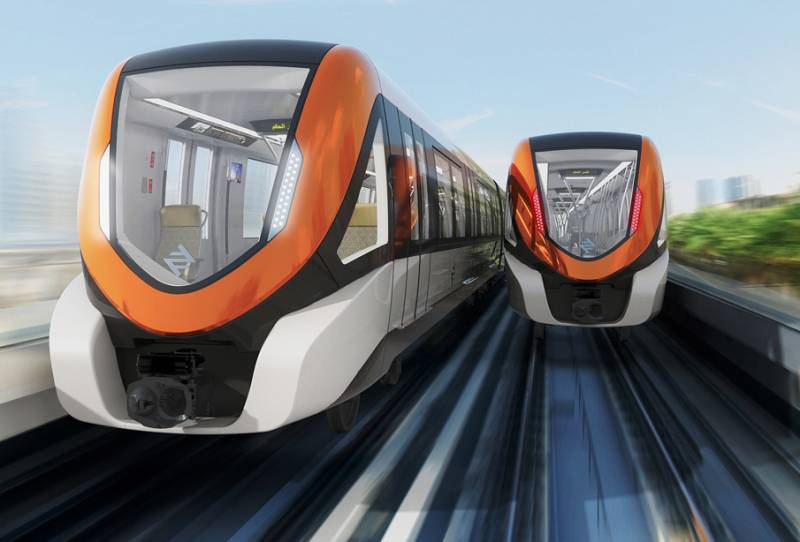For a country to be prosperous, it is important that the needs of the people are understood by the authorities. Merely understanding is not enough, it is equally important that the best possible solutions are explored to fulfill these needs. A satisfied citizenry is at the heart of a strong polity.
What could be the objective of the government when deciding to initiate mega projects such as the Orange Metro Train Project? To understand the answer to this question, we must first understand the most likely objectives of the project. First and foremost, the idea of the OLMT is to ease congestion and the problems associated with traffic density because of over population in the city. In turn, overpopulation means less availability of resources and more consumers. This also means increasing use of transportation, congestion, and traffic density.
Lahore, the second largest city of Pakistan, has a population of around 10 million inhabitants. At an average, the transportation demands of the city rounds off to 6.8 million daily person trips for work and other recreational activities. This doesn’t include walking trips.
As per the several transport studies conducted to overcome this situation, the travel demands of the people were almost 7 million in the year 2005 which is expected to rise to 11 million by the year 2021. Already, over the last fifteen years, Lahore has experienced a rapid growth in both population and vehicle ownership.
According to the Lahore Urban Transport Master Plan (LUTMP) in 2010-2011, 8 million trips were recorded per day in the year 2010. Adding to the already tough situation, a major percentage of this travel demand comprises of public transport, something to ponder because such a huge travel demand also carries enormous disadvantages.
Orange Metro Train Project in Lahore comes to the rescue of the city just in time when it was needed the most. The environment friendly, international standard metro train would not only facilitate commuters but also result in lesser air pollution. It is expected that the heavy burden of traffic on the roads would be shared by the Orange Metro Train.
Transportation is thus one of the most significant contributors to climate change, accounting for 25 % of global emissions in absence of effective mass transit schemes. With the increasing population growth rate and urbanization in the provincial capital, there is a dire need of introducing mass transit system in Lahore. Orange Line Metro provides the best possible solution to all transportation related woes faced by the general public.
It is true that as the construction is underway, the city is facing a lot of problems revolving around mobility and environmental concerns. However, in compliance with the Pakistan Environmental Regulations in the Pakistan Environmental Protection Act (PEPA) 1997, the Government of the Punjab entrusted NESPAK with the work of carrying out an EIA study of the proposed project. In this report, all the possible environmental and social concerns were stated yet the project was approved because the effects seemed not to be long lasting as proper mitigation measures were also suggested in the same report.
Here, we must also realize the fact that whenever a mega infrastructure project is being carried out, certain concerns are always attached with it. But once they are given a form and shape, they turn out to be a massive contributor in the prosperity of the respective country.
The Orange Line Metro Train is environment friendly as it emits low greenhouse gas (e.g. chlorofluorocarbons) and will also be instrumental in reduction of carbon dioxide emissions as estimated through clean development mechanism (145227.5 ton per annum pro rata – Delhi Metro). OLMT will eventually reduce the congestion on the roads resulting in less respiratory diseases and reduction in accidents.
All the smart nations today are following the precedent that if they focus on improving their mass transit systems and infrastructure as a whole, they would be prosperous. For instance, recently, Canada announced that the budget 2016 would come with a special preference to improve the mass transit system so that the commuting problems of the people are resolved. It also mentioned the same reason of doing so as Pakistan has today: over population and congestion in the city resulting in longer commuting times and more travel demands.
Less known is the fact that environment problem when catered to, also results in a boost to economy. This is what happens when there are less environment concerns and easy ways of commuting. This is especially true for countries like Pakistan where congestion and overpopulation are increasing at a threateningly high rate and so is the need of the people.
China already has around twenty-five running metro systems. It is a proud moment for Pakistan because China already has plenty of experience when it comes to such developmental projects. This also gives us enough reasons to repose trust in China when it comes to the construction of the Orange Line Metro Train in Lahore city. For that matter, those who say that the construction of the Orange Line Metro Train lacks planning should not be paid much heed. China has taken full responsibility of the project. The Chief Minister Punjab has also reassured that the project will be completed within stipulated timelines.
In conclusion, if we wait for some time, the Orange Metro Train's construction will finally be completed, much of the current environmental and related health concerns the Lahorites are facing today, will not exist for long. It is true that Pakistan is new to such development projects but all the developing countries have been paying the costs of "highly necessary" development works to meet the requirements of this century.






